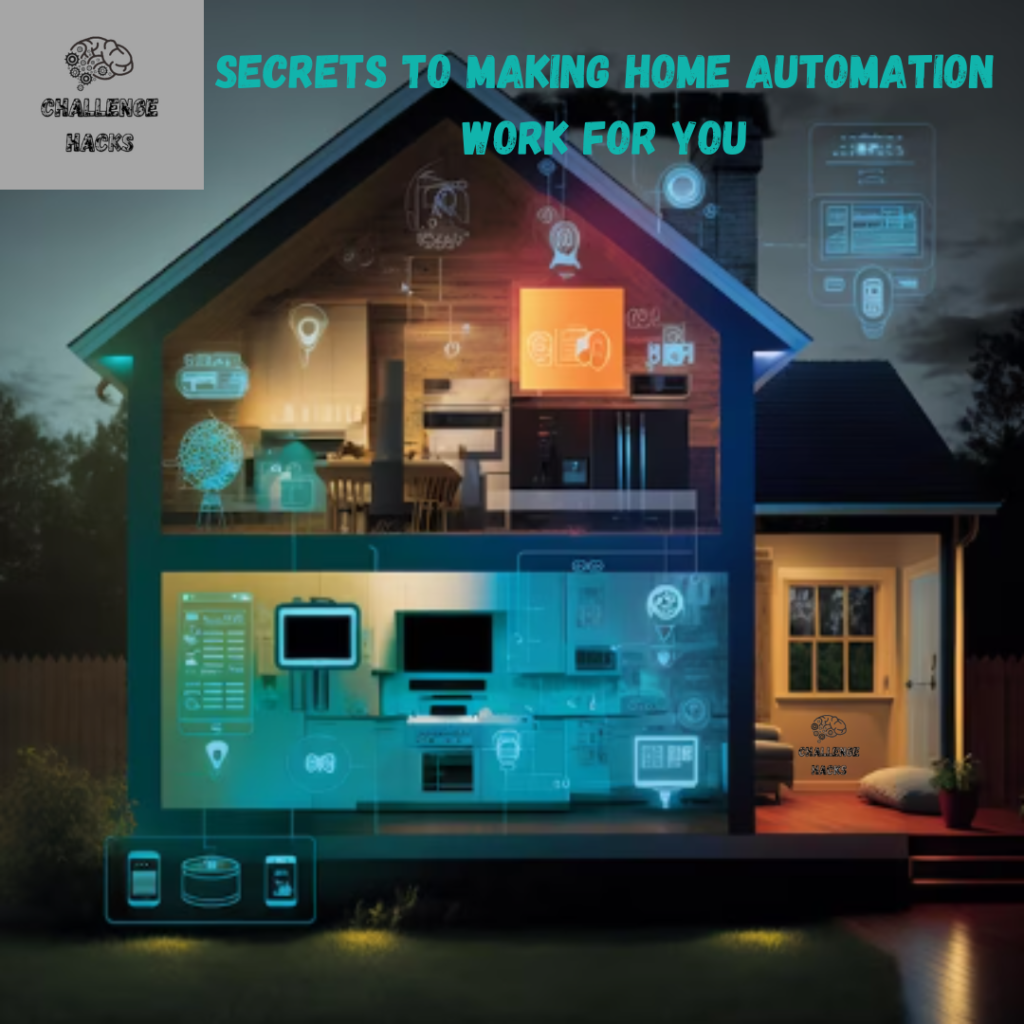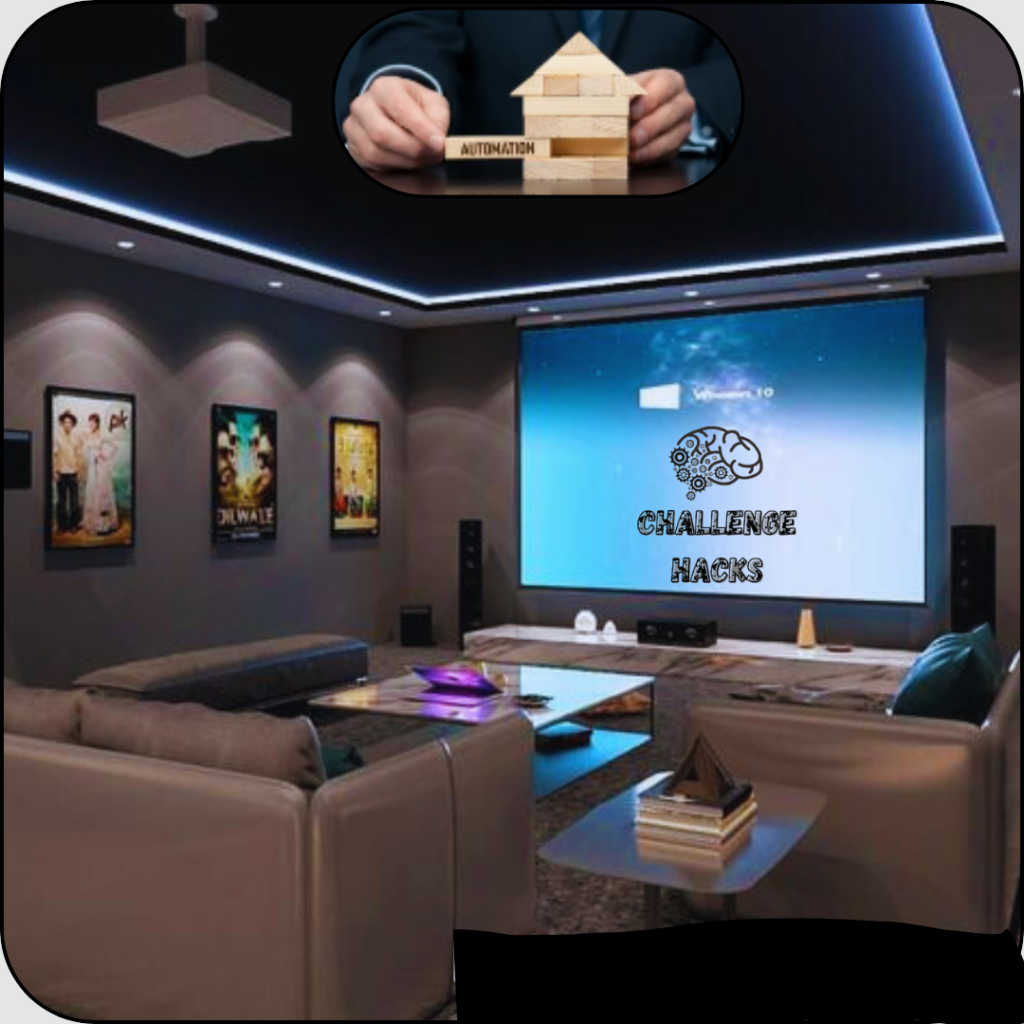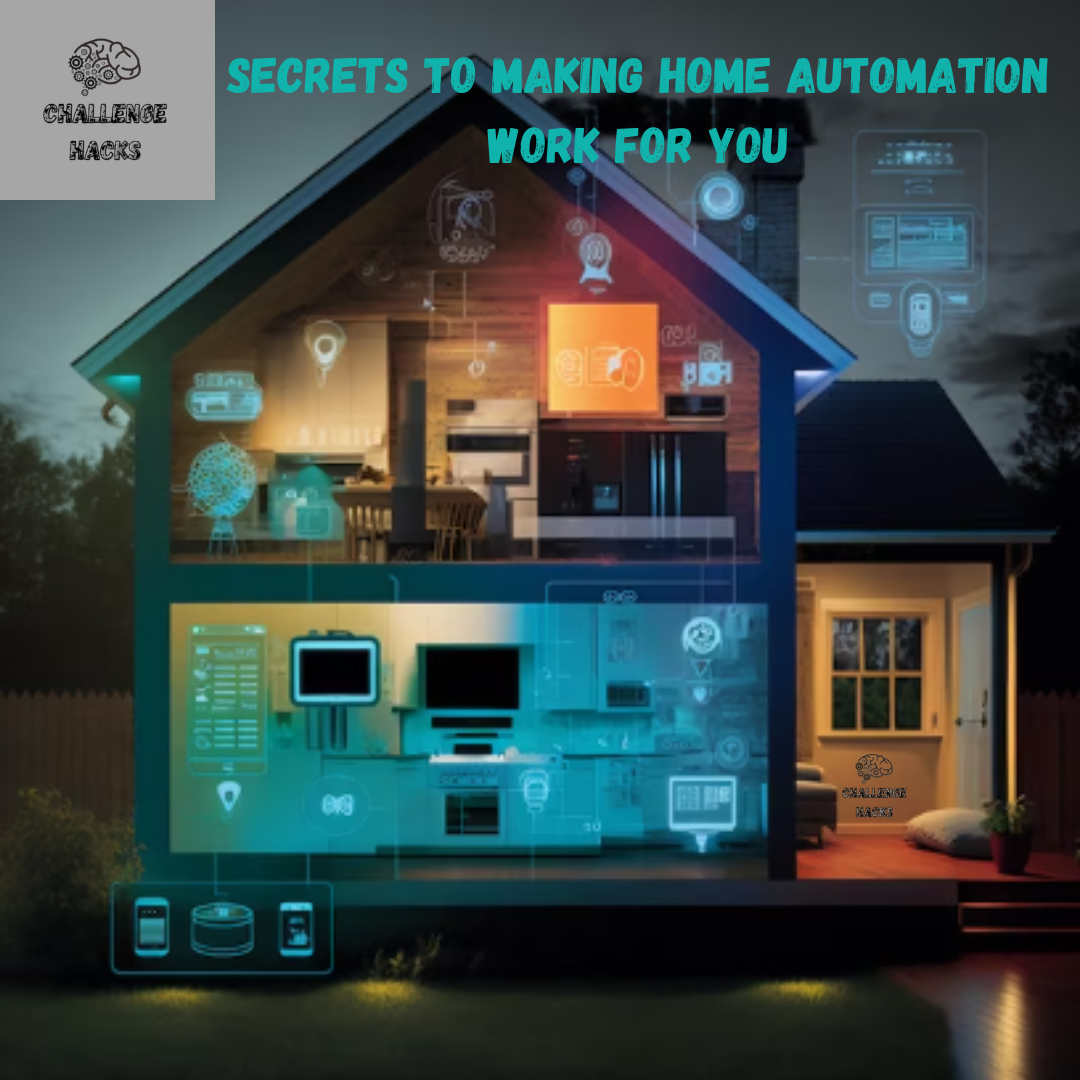
The process of leveraging smart technologies and gadgets to control your house’s lighting, temperature, security, entertainment, and other features is known as home automation. Your life can be simpler, cozier, and more pleasurable Making Home Automation Work for You.
Nevertheless, configuring, maintaining, and optimizing your smart home can also be difficult. For this reason, I’ve put up a list of 8 tips that will help you to Making Home Automation Work for You. These pointers will assist you in selecting the appropriate gadgets, setting up the most effective routines, and resolving any potential issues.
Table of Contents
Making Home Automation Work for You

Secret 1: Start with a clear goal and a budget
Before you dive into the world of home automation, you should have a clear idea of what you want to achieve and how much you are willing to spend.
Do you want to automate your entire home or just a few rooms? Do you want to focus on convenience, comfort, entertainment, or security? Do you have a specific problem or need that you want to solve with home automation? These questions will help you narrow down your options and prioritize your purchases.
You should also set a realistic budget for your home automation project. Depending on the type and number of devices you want to install, the cost can vary significantly. You don’t have to buy everything at once; you can start with the essentials and add more devices over time.
However, you should also factor in the ongoing costs of maintenance, updates, subscriptions, and electricity. You can use online tools like this one to estimate the cost of running your smart home.
Secret 2: Choose compatible devices and platforms
Compatibility is one of the main issues with home automation. Not every smart gadget is compatible with every other device or every platform. For instance, certain gadgets might only be compatible with Google Assistant or Apple HomeKit, and others might only function with Amazon Alexa.
While some devices connect to your network via Wi-Fi or Bluetooth, others could need a hub or bridge. Certain devices, such as those that use Thread, Z-Wave, or Zigbee, may employ distinct protocols or standards.
To avoid compatibility issues, you should do some research before buying any smart device. Check the product specifications, reviews, and user manuals to see what platforms and devices it supports.
You can also use online tools like this one to check the compatibility of different devices. Ideally, you should choose devices that work with multiple platforms and protocols, so you have more flexibility and options in the future.
Secret 3: Use voice assistants and smart speakers
Using voice assistants and smart speakers is one of the simplest and most practical methods to manage your smart home. Software programs that can comprehend commands in natural language and carry out tasks on your behalf are known as voice assistants.
Hardware with speakers and microphones integrated with that can link to voice assistants is known as a smart speaker. Amazon Alexa, Google Assistant, Apple Siri, Samsung Bixby, and Microsoft Cortana are a few voice assistant examples. Amazon Echo, Apple HomePod, Samsung Galaxy Home, Google Nest, and Microsoft Invoke are a few brands of smart speakers.
“Voice command your smart home with Google Assistant and Alexa. Control lights, appliances, and more with ease. Explore the convenience, but stay informed about privacy and security.”
To use voice assistants and smart speakers effectively, you should place them in strategic locations around your home where they can hear you clearly and respond quickly. You should also name your smart devices logically and consistently so that the voice assistants can recognize them easily. You should also learn the common commands and phrases that each voice assistant supports so that you can communicate with them naturally.
Secret 4: Automate based on triggers and conditions
Automating your house based on conditions and triggers is another method to increase its intelligence and efficiency. Events or behaviors known as triggers set off other automatic processes. Conditions are standards or guidelines that establish if something is appropriate or not. For instance, a motion sensor detecting movement in a room may serve as a trigger, and day or night could serve as a condition.
By using triggers and conditions, you can create smart scenarios that adapt to your needs and preferences. For example, you can create a scenario that turns on the lights in your bedroom when you wake up in the morning, but only if it is dark outside. You can also create a scenario that turns off the lights and locks the doors when you leave your home, but only if no one else is at home.
To create smart scenarios based on triggers and conditions, you need to use a smart home platform or app that supports this feature. Some examples are IFTTT, SmartThings, Home Assistant, and Yonomi. These platforms or apps allow you to connect your smart devices and create rules or routines that automate them based on various triggers and conditions. You can also use voice assistants and smart speakers to activate or deactivate these scenarios with voice commands.
Secret 5: Optimize for energy efficiency and security
The idea of employing home automation to optimize your house for security and energy efficiency is covered in this paragraph. It emphasizes how smart systems and gadgets help achieve both objectives.
It describes how to monitor and manage your energy use with smart devices such as plugs, lamps, and thermostats for energy efficiency. You can save energy and money by having these devices configured to change their settings in response to various events, such as the weather and your presence.
Regarding security, it talks about securing your house against different dangers like burglars, fires, and floods by utilizing smart cameras, locks, alarms, and sensors. It also covers how communication systems and smart doorbells can improve security by letting you speak with guests from a distance.
To achieve these goals, the passage recommends choosing smart devices with specific features like motion detection and encryption. Additionally, it emphasizes the importance of integrating these devices and systems with voice assistants for more accessible and efficient control.
Overall, the passage underscores the advantages of home automation in achieving energy efficiency and security, offering practical tips to Making Home Automation Work for You the most of these technologies.
Secret 6: Test and update your devices regularly
Intelligent systems and gadgets are not flawless, just like any other technology. They might break, become out-of-date, or be compromised. To make sure your gadgets are operating correctly and securely, you should test and update them frequently.
You should test your gadgets by making sure they work properly, are connected, have a full charge, are responsive, etc. It is advisable to verify their compatibility with various systems and devices. Additionally, you ought to evaluate how well they work in various contexts. You should troubleshoot any problems or faults as soon as you discover them.
You should check the firmware, software, or app versions on your devices to upgrade them. Checking their bug fixes and security patches is also advised. Check out their updates and enhancements as well. Installing any available updates should be done as soon as feasible.
Whenever possible, you should enable automatic updates to Making Home Automation Work for Your testing and updating simpler. Utilizing a platform or app for your smart home that lets you control all of your gadgets from one location is also advised. Additionally, you want to sign up for websites or newsletters that inform you about the most recent developments and trends in home automation.
Secret 7: Learn from others and get inspired
One of the finest ways to increase your knowledge and proficiency in the field of home automation is to learn from those who have more expertise or knowledge in it. You may find a wealth of offline and online resources to help you with your smart home, including ideas, solutions, and tips & tricks.
You can read books, periodicals, blogs, articles, and guidelines, for instance, that address a variety of home automation-related subjects. Additionally, you may view lessons, webinars, podcasts, and movies that walk you through using various platforms or devices.
To communicate with other smart home professionals or enthusiasts, you can also sign up for forums, clubs, communities, or events. Additionally, you can go to showcases, exhibitions, or showrooms to view various products or systems in action.
By absorbing knowledge from others and drawing inspiration from their work, you can broaden your perspectives and find fresh approaches to home automation. Additionally, you might ask others who can assist you in resolving issues or enhancing your outcomes for their opinions and ideas.
Secret 8: Have fun and experiment
This passage emphasizes the idea that home automation should not only be seen as a practical tool but also as a creative and enjoyable hobby. The main point is to have fun while experimenting with different aspects of home automation.
- Express Yourself: It suggests that home automation allows you to express your personality and interests. You can set up your smart home in a way that aligns with your preferences and lifestyle.
- Explore and Learn: The passage encourages individuals to explore new technologies, devices, platforms, routines, and commands. This experimentation can lead to discovering more efficient and creative ways to use automation.
- No Fear of Mistakes: It reminds readers not to fear making mistakes. Experimentation often involves trial and error, and learning from these experiences can lead to a deeper understanding of home automation.
- Enjoyment: Ultimately, the main message is that home automation should be an enjoyable and fulfilling endeavor. It’s not just about practicality but also about having fun while optimizing your living space with smart technology.

Pros and Cons Of Making Home Automation Work for You
Pros: (Making Home Automation Work for You)
- Convenience: Home automation simplifies daily tasks and routines, allowing you to control devices with ease, often from a single interface or your smartphone.
- Energy Efficiency: Smart thermostats and lighting can help reduce energy consumption, leading to cost savings and environmental benefits.
- Security: Smart security systems offer real-time monitoring and alerts, enhancing the safety of your home.
- Customization: You can tailor your automation setup to match your preferences and needs, creating a personalized living environment.
- Remote Access: Control your home from anywhere, giving you peace of mind and the ability to manage your home while away.
- Entertainment: Enjoy home entertainment systems with integrated audio and video, making it easy to set up your ideal home theater.
Cons: (Making Home Automation Work for You)
- Cost: Setting up a smart home can be expensive, with the initial investment in devices and technology.
- Complexity: Some systems can be complicated to set up and may require troubleshooting.
- Compatibility Issues: Different brands and devices may not always work seamlessly together, causing compatibility problems.
- Privacy Concerns: Smart devices may collect data, raising privacy issues and concerns about data security.
- Dependency on Technology: Relying on automation for daily tasks can be challenging if the system malfunctions or loses power.
- Learning Curve: It can take time to learn how to use and customize automation systems effectively.
Balancing the advantages and disadvantages is essential when deciding to integrate home automation. Careful planning and consideration of your specific needs can help you to Making Home Automation Work for You the most of this technology while minimizing potential drawbacks. (Making Home Automation Work for You)
Conclusion:
Finally, figuring out how to Making Home Automation Work for You might be a life-changing event. It provides unmatched security, energy efficiency, and ease. One major benefit of owning a smart home is that it can be tailored to your preferences, and having remote access is convenient. (Making Home Automation Work for You)
10 Tips for Making Money with Home Automation
Thought must be given to the upfront expenses, compatibility issues, and privacy concerns. You may realize the full potential of home automation by embracing its creative side, exploring, and customizing it to your needs. The goal of home automation is to improve your quality of life and create a living environment that genuinely meets your needs and desires, not just to use technology.
What is home automation, and how does it work?
Home automation involves using smart devices and technology to control and manage various aspects of your home, such as lighting, heating, security, and entertainment. (Making Home Automation Work for You) It typically works by connecting these devices to a central hub or your smartphone for remote control.
How can I get started with home automation, and what are the essential devices to begin with?
To get started, you’ll need a central hub or a smartphone app to control your devices. Essential devices to begin with often include smart plugs, smart bulbs, and a smart thermostat. (Making Home Automation Work for You)These can help you automate lighting, energy usage, and climate control.
What are the privacy and security concerns associated with home automation?
Home automation can raise privacy and security issues, as some devices collect data and may be vulnerable to hacking. (Making Home Automation Work for You)It’s essential to use secure networks, regularly update your devices, and be cautious about sharing personal information.
How can I ensure that my home automation system is compatible and works seamlessly together?
Ensuring compatibility can be challenging. It’s best to stick to a single ecosystem (e.g., Apple HomeKit, Google Home, Amazon Alexa) for your devices. Research and buy devices that are part of that ecosystem for better compatibility. (Making Home Automation Work for You)
What are some advanced or creative ways to use home automation beyond basic functions?
Home automation can be used in creative ways, such as setting up custom routines, integrating voice control, and even experimenting with smart home art installations. The possibilities are endless and can be tailored to your interests and needs. (Making Home Automation Work for You)
Are there any ongoing costs associated with home automation?
The initial investment in smart devices is a common cost, but some services or platforms may require subscriptions for advanced features or cloud storage. It’s essential to consider potential ongoing expenses. (Making Home Automation Work for You)
Can I install and set up home automation systems myself, or do I need professional help?
Many home automation devices are designed for DIY installation and setup. However, for complex integrations or installations like smart security systems, professional help may be advisable. (Making Home Automation Work for You)
What should I do if my home automation system malfunctions or encounters technical issues?
When facing technical issues, start by troubleshooting the problem. If it persists, consult the device’s support resources or contact the manufacturer’s customer support for guidance. (Making Home Automation Work for You)
How can I balance automation with maintaining manual control over my home devices?
Most home automation systems allow manual control alongside automation. (Making Home Automation Work for You) You can use physical switches or apps to adjust settings as needed.
What is the future of home automation, and how can I stay up-to-date with the latest developments?
Home automation is a rapidly evolving field. (Making Home Automation Work for You) To stay updated, follow technology news, join online communities, and explore resources from device manufacturers and tech enthusiasts.
